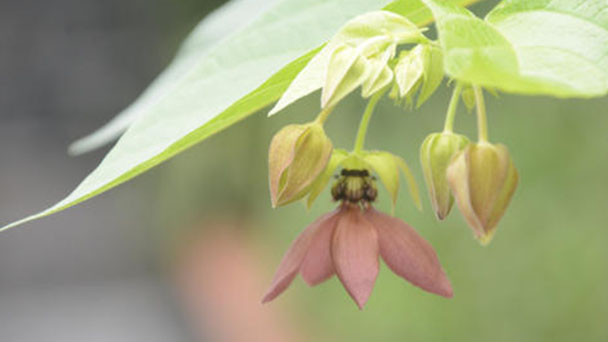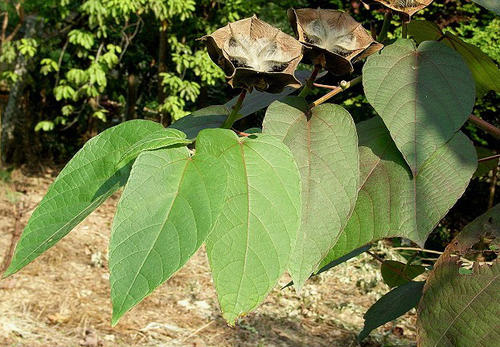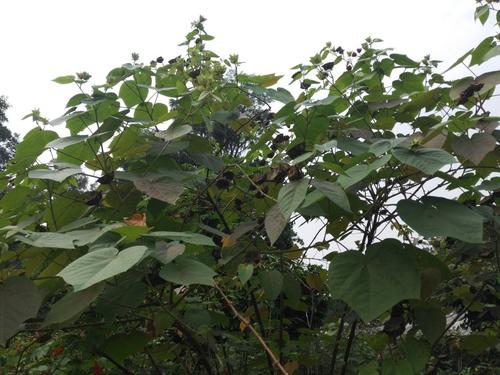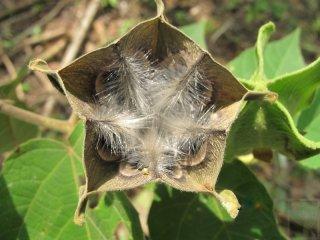Abroma augusta (Devils cotton) profile
Written by Maggie
Mar 12 2021

Abroma Augusta, commonly called Devil's cotton, is a shrub whose twigs are densely covered with starlike hairs when young; Leaves are cordate or ovate-cordate; There are flowers and fruits, cymes with red purple flowers 1-5, spoon-shaped petals are red purple; Capsule is membranous, obconical, black seed majority, moment round. Abroma Augusta grows in warm, moist, well-lit and humus rich humid soil. They are distributed in China, India, Vietnam, Malaysia and other places.
Abroma Augusta has good medicinal value, such as circulating menstruation and promoting blood circulation, reducing swelling and relieving pain.
Abroma Augusta picture

Morphological characteristics of Abroma Augusta
Branch
Abroma Augusta is a shrub, 1-4 m tall, branchlets are densely covered with starlike hairs when young.
Leaf
Leaves of Abroma Augusta are cordatate or ovate-cordate, sometimes 3-5 lobed, 10-22 cm long and 9-18 cm wide, acute or acuminate at apex, cordatate or obtrate at base, glabrous or sparsely stellate pubescent above, densely short velutinous below, basal veins 3-7, veins protruding on both sides; Petiole is 1-10 cm long; Stipules are oblate, 5-10 mm long, glabrescent.
Flowers
The cyme of Abroma Augusta has 1-5 flowers; Reddish-purple, about 5 cm in diameter; Abroma Augusta has 5 sepals, connate near base, lanceolate, 15 -- 18 mm long, densely pubescent on both surfaces, petals 5, reddish purple, spatulate, 2.5 cm long, apical acute or obtuse, base concave and hairy, connate with base of stamen; 15 developed stamens, each 3 gathered into a group, in the base of stamens and stamens alternate, stamens 5, nearly spatulate, hair on both sides; Ovary is rectangular, ca. 1.5 mm long, slightly hairy, 5-loculed, with 5 furrows, ca. 1.5 mm long, style triangular-liguate, ca. 1/2 of the ovary.
Fruit
Capsules of Abroma Augusta are membranous, obconic, ca. 3-6 cm in diam., stellate, 5-winged, margin hirsute, apically truncated; Seeds are numerous, rectangular, black, ca. 2 mm long.
Abroma Augusta's flowering season is spring and summer.
The ecological habits of Abroma Augusta
Abroma Augusta prefers warm, moist, well-lit, humus-rich moist soil.
Abroma Augusta was born at the edge of a valley or forest.

Abroma Augusta's propagation
Spring sowing
In spring, direct seeding and seedling transplanting were conducted. According to the row spacing of 50cm×50cm, acupoints were planted for direct seeding, and 5-6 seeds were planted for each acupoint. After sowing, 2cm of fine soil was covered with water and moisturized. Germinate in 10-15 days.
Seedling transplanting
The row spacing is 25cm and the drill is ditched. Seed 8-10cm apart, after sowing, cover with fine soil 2cm, water moisture. When the seedling height of Abroma Augusta was 35cm, the row spacing was 40cm×40cm.
Field management
When the height of hill-sowed seedlings was 10cm, the seedlings were thin, plowed and weeded 4 times a year, applied compound fertilizer or farm manure once in May and August, applied compost or barnyard manure once in winter, and earth-raising was carried out.
The distribution area of Abroma Augusta
Abroma Augusta is produced in Guangdong, Guangxi, Yunnan and Guizhou provinces.On the edge of valleys or forests.
Abroma Augusta is also found in India, Vietnam, Malaysia, Thailand, Indonesia, the Philippines and other places.
Abroma Augusta uses
Medical use
Abroma Augusta leaf oil infusion can also be used for some skin diseases, and as a washing agent for wounds, ulcers and fistulas. Abroma Augusta leaf oil can drive hookworm after internal administration, and its tannic acid has mild astringent property. Its volatile oil can drive wind. The volatile oil is absorbed from the digestive tract and partially excreted by the respiratory tract. In addition, Abroma Augusta oil is also used as a deodorant and analgesic for people with neuropathic pain. Some people believe that Abroma Augusta has a local anesthetic effect.
Landscape use of Abroma Augusta
Abroma Augusta can be cultivated in the garden for viewing, but also can be used as a mirror, flower beds with planting.
Abroma Augusta's stem bark can be woven.

Latest Updated
- Benefits of Bugleweed - 7 Science-backed Health Benefits
- Bugleweed Dangers & Side Effects - Is It Poisonous?
- How to Plant Evergreen Trees - What You Should Know
- When to Plant Evergreens - Grow Guide for Evergreen Trees
- 12 Wonderful Evergreen Shrubs for Your Garden
- 12 Popular Evergreen Plants with Pictures for Beginners
- When And How To Prune A Lilac Bush Like a Pro
- How to Grow & Care for Lilac Vine (Hardenbergia Violacea)
- Japanese Lilac Tree (Syringa Reticulata) Care & Propagation Guide
- Shumard Oak Pros and Cons - What to Know
Popular Articles
- Winter maintenance of Antirrhinum Majus
- How to Grow Terminalia Mantaly Tree
- How to Grow and Care for Crossostephium Chinense
- How to grow Antirrhinum Majus in spring
- Peristeria Elata (Dove Orchid) Profile: Info & Care Guide
- Underwatered Snake Plant (Sansevieria Trifasciata) - Signs And How To Fix
- How to Care for Brazilian Jasmine Plant (Mandevilla Sanderi)
- How to Grow & Care for Graptopetalum Purple Delight in Summer
- Rosa Chinensis (China Rose): Plant Growing & Care Tips
- How to Care for Baby Sun Rose (Aptenia Cordifolia)